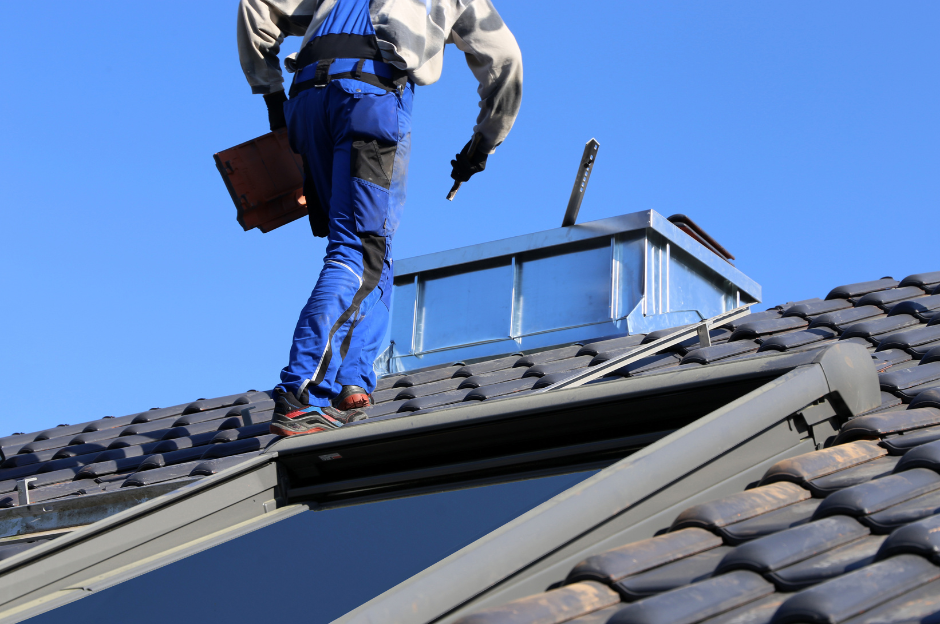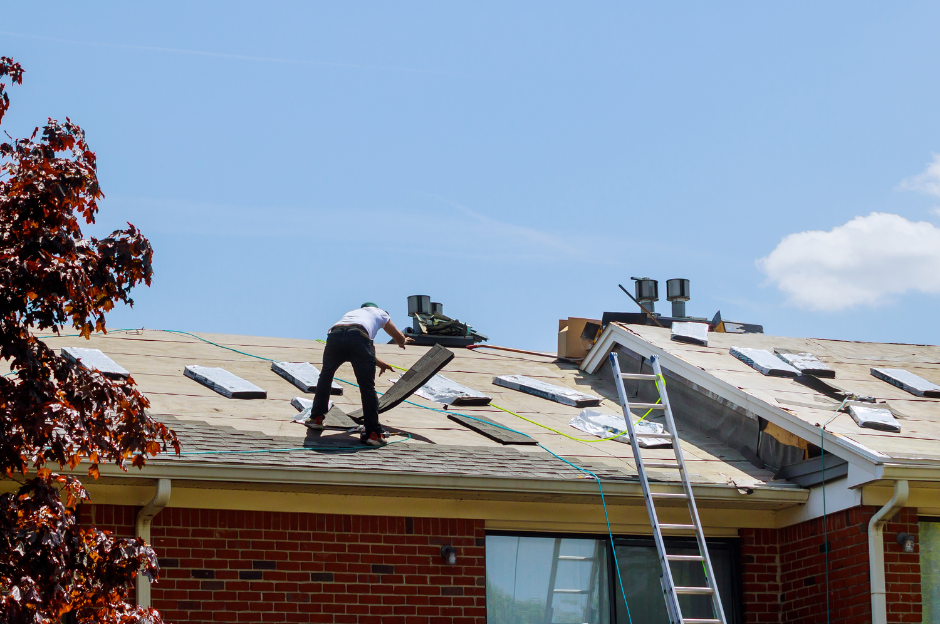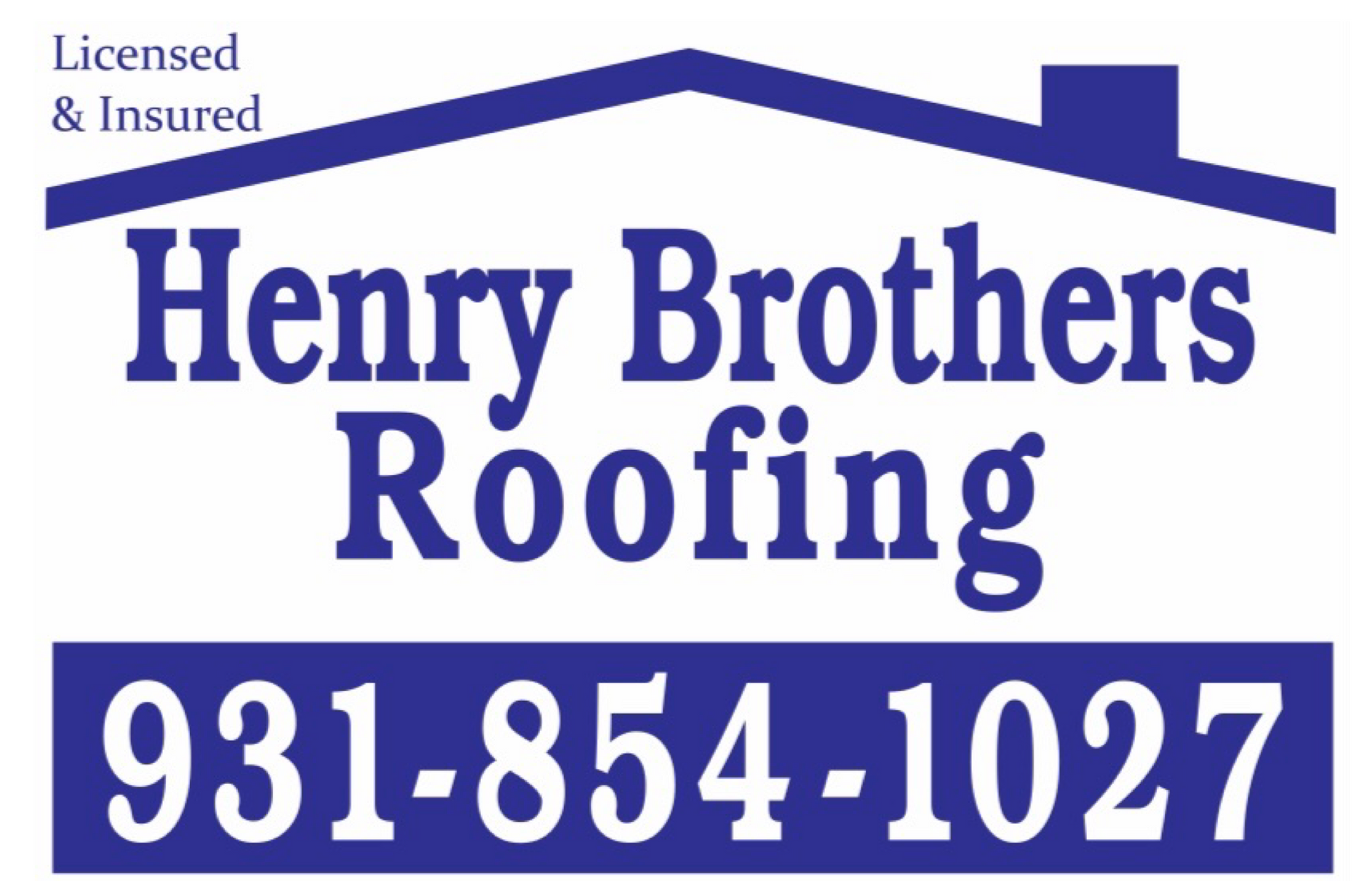Understanding the Lifespan of Different Roofing Solutions
June 7, 2024

When it comes to home maintenance and investment, one of the most critical aspects to consider is the roof. It protects the structure from the elements and significantly impacts the home's overall aesthetic and value. Understanding the lifespan of different roofing solutions can help homeowners make informed decisions that balance cost, durability, and maintenance needs. This blog post will delve into the various types of roofing materials, their expected lifespans, and factors that influence their longevity.
Common Roofing Materials and Their Lifespans
1. Asphalt Shingles
Lifespan: 20-30 years
Asphalt shingles are the most popular roofing material in North America due to their affordability and ease of installation. They come in two types: organic and fiberglass. Fiberglass shingles are more durable and fire-resistant compared to their organic counterparts.
Advantages:
- Cost-effective
- Wide range of colors and styles
- Easy to install and repair
Disadvantages:
- Shorter lifespan compared to other materials
- Susceptible to wind and hail damage
- Can be less environmentally friendly
2. Wood Shingles and Shakes
Lifespan: 25-40 years
Wood shingles and shakes offer a natural, rustic appearance. Shingles are machine-cut and more uniform, while shakes are hand-split and have a rougher texture.
Advantages:
- Attractive, natural look
- Good insulation properties
- Environmentally friendly (if sustainably sourced)
Disadvantages:
- High maintenance (regular treatment required to prevent rot and insect damage)
- Fire risk (unless treated with fire retardant)
- Can be more expensive than asphalt
3. Metal Roofing
Lifespan: 40-70 years
Metal roofing has gained popularity due to its durability and energy efficiency. It can be made from various metals, including steel, aluminum, and copper, each offering different benefits and price points.
Advantages:
- Long lifespan
- Highly durable and resistant to extreme weather
- Reflects sunlight, reducing cooling costs
- Recyclable
Disadvantages:
- Higher upfront cost
- Can be noisy during rain or hail (unless properly insulated)
- Requires professional installation
4. Clay and Concrete Tiles
Lifespan: 50-100 years
Clay and concrete tiles are known for their durability and aesthetic appeal. They are often used in Mediterranean, Spanish, and Southwestern-style homes.
Advantages:
- Extremely long lifespan
- Fire-resistant
- Low maintenance
- Aesthetically appealing
Disadvantages:
- Very heavy (may require additional structural support)
- Expensive
- Brittle (can crack if walked on)
5. Slate
Lifespan: 75-200 years
Slate is one of the most durable roofing materials available. It is a natural stone product that offers a timeless, elegant appearance.
Advantages:
- Exceptional longevity
- Very low maintenance
- Fire-resistant
- Environmentally friendly
Disadvantages:
- Very expensive
- Heavy (requires strong structural support)
- Complex installation (requires skilled labor)
6. Synthetic Roofing Products
Lifespan: 30-50 years
Synthetic roofing materials, such as rubber, plastic, and polymer, are designed to mimic the appearance of more expensive materials like slate and wood.
Advantages:
- More affordable than natural materials
- Lightweight
- Durable and resistant to weather damage
- Low maintenance
Disadvantages:
- Newer product (less long-term data on performance)
- Some products may not look as authentic as natural materials
- Quality can vary significantly between manufacturers
Factors Influencing Roofing Lifespan
1. Climate and Weather Conditions
The local climate significantly impacts the lifespan of a roof. Extreme weather conditions, such as heavy rainfall, high winds, snow, and hail, can accelerate wear and tear. For example, asphalt shingles may degrade faster in hot climates due to constant exposure to UV rays.
2. Installation Quality
Proper installation is crucial for the longevity of any roofing material. Poor installation can lead to issues such as leaks, inadequate ventilation, and premature failure. It's essential to hire experienced and reputable roofing contractors to ensure the job is done correctly.
3. Maintenance and Upkeep
Regular maintenance can extend the lifespan of a roof. This includes cleaning gutters, removing debris, inspecting for damage, and addressing minor issues promptly. Some materials, like wood shingles, require more frequent maintenance to prevent issues such as rot and insect infestation.
4. Ventilation
Proper roof ventilation helps regulate temperature and moisture levels, reducing the risk of damage and extending the roof's lifespan. Poor ventilation can lead to problems such as mold growth, ice dams, and premature aging of roofing materials.
5. Material Quality
The quality of the roofing materials themselves plays a significant role in their longevity. Higher-quality materials often come with longer warranties and better performance characteristics. When choosing a roofing material, it's important to consider both the initial cost and the long-term value.
Comparing Cost and Longevity
When selecting a roofing material, homeowners should balance upfront costs with long-term value. While some materials may be more expensive initially, their longer lifespans and lower maintenance needs can make them more cost-effective over time. Here’s a brief comparison of cost versus longevity:
Asphalt Shingles: Low upfront cost, moderate lifespan. Suitable for homeowners on a budget but may require more frequent replacement.
Wood Shingles and Shakes: Moderate to high upfront cost, moderate lifespan. Requires regular maintenance, offering a balance between cost and aesthetics.
Metal Roofing: High upfront cost, long lifespan. Durable and energy-efficient, potentially offsetting higher initial expenses.
Clay and Concrete Tiles: High upfront cost, very long lifespan. Low maintenance but heavy and brittle.
Slate: Very high upfront cost, exceptionally long lifespan. Elegant and durable but requires strong structural support.
Synthetic Roofing Products: Moderate upfront cost, long lifespan. Versatile and durable, offering a good balance of affordability and performance.
Making the Right Choice
Choosing the right roofing material depends on various factors, including budget, aesthetic preferences, climate, and maintenance capabilities. Here are some steps to help make an informed decision:
1. Assess Your Needs and Priorities
Consider what is most important for your roofing solution. Are you looking for the most cost-effective option? Do you prioritize durability and low maintenance? Is the aesthetic appeal a significant factor? Identifying your priorities will help narrow down the options.
2. Evaluate Local Climate Conditions
Consider the weather conditions in your area. Some materials perform better in specific climates. For example, metal roofing is excellent for areas prone to extreme weather, while clay tiles are suitable for hot, dry climates.
3. Consider Long-Term Costs
Look beyond the initial cost and consider the long-term expenses, including maintenance, repairs, and potential replacement. A more expensive material with a longer lifespan and lower maintenance needs may be more cost-effective in the long run.
4. Consult with Roofing Professionals
Seek advice from reputable roofing contractors and professionals. They can provide valuable insights into the best materials for your specific situation, as well as cost estimates and installation expertise.
5. Research Warranties
Check the warranties offered by manufacturers and contractors. Longer warranties often indicate higher-quality materials and better durability. Ensure you understand the terms and conditions of the warranties to make an informed decision.
Henry Brothers Blog

Multi-family buildings pose unique challenges for roofing—requiring durable, efficient, and cost-effective solutions that serve multiple households simultaneously. Selecting the right system and partner can significantly impact long-term maintenance and energy bills. Common Roofing Challenges in Multi-Family Properties Large surface areas Multiple penetrations (vents, HVAC units) Noise and disruption during installation High foot traffic for maintenance Energy efficiency Efficient Roofing Materials TPO (Thermoplastic Polyolefin): Lightweight, reflective, and energy-efficient. Ideal for flat or low-slope roofs. Modified Bitumen: Offers durability and weather resistance. Works well for larger structures. Metal Roofing: Long-lasting and low-maintenance. Higher upfront costs but excellent ROI. Asphalt Shingles: Budget-friendly and easy to repair. Better for pitched multi-family homes. Affordability Strategies Bulk Purchasing Discounts: Roofers often offer lower rates for large-scale projects. Energy Rebates and Tax Credits: Cool roofing materials may qualify for incentives. Roof Coatings: Extend lifespan and defer full replacements. Preventive Maintenance Plans: Regular inspections reduce major repair costs. Partnering with the Right Contractor Choose a roofing contractor experienced in multi-family dwellings. Look for: References from similar projects Warranty offerings Insurance and licensing Clear timelines and communication protocols

Your roof is one of the most defining features of your home’s architecture. A well-designed roof complements the style, era, and character of your house, enhancing both curb appeal and value. Whether you own a modern home, a Victorian masterpiece, or a Mediterranean villa, choosing the right roofing materials and design is essential. This article explores custom roofing solutions for different architectural styles, ensuring your roof is both aesthetic and functional. 1. Why Custom Roofing Matters A one-size-fits-all approach doesn’t work for roofing. Here's why customization is key: 🏡 Preserves Architectural Integrity The roof should match the home's era and design. A poorly chosen roof can clash with the architecture and reduce property value. 💰 Boosts Home Value & Curb Appeal A well-matched roof enhances visual appeal, making your home stand out. Homebuyers prefer houses with roofs that fit the overall design. 🌦 Enhances Durability & Efficiency Custom roofing accounts for climate, slope, and insulation. Choosing the right materials ensures longer roof life and energy efficiency. 2. Best Roofing Materials for Different Architectural Styles 🏗 Modern & Contemporary Homes Modern architecture focuses on clean lines, minimalism, and energy efficiency. Best Roofing Options: ✅ Flat Roofs – Achieve a sleek, contemporary look. ✅ Metal Roofing – Durable and complements modern aesthetics. ✅ Green Roofs – Eco-friendly and visually striking. ✅ Solar Panels – Integrate renewable energy solutions. 🏰 Victorian & Gothic Revival Homes These homes have steep-pitched roofs, turrets, and elaborate detailing. Best Roofing Options: ✅ Slate Tiles – Classic, long-lasting, and historically accurate. ✅ Wood Shingles – Adds charm and natural beauty. ✅ Decorative Metal Accents – Enhances ornate Victorian designs. 🏝 Mediterranean & Spanish-Style Homes Inspired by European coastal homes, these feature stucco walls and curved archways. Best Roofing Options: ✅ Clay or Terracotta Tiles – Traditional, weather-resistant, and elegant. ✅ Concrete Tiles – Durable and available in various textures and colors. ✅ Synthetic Spanish Tiles – Modern, lightweight alternatives with classic appeal. 🌲 Rustic & Cabin-Style Homes These homes emphasize natural materials and a cozy aesthetic. Best Roofing Options: ✅ Wood Shakes – Blends seamlessly with wooded surroundings. ✅ Metal Roofing (Rustic Finish) – Durable with a weathered, natural look. ✅ Green Roofs – Enhances sustainability and insulation. 🏡 Colonial & Traditional Homes These timeless homes focus on symmetry and classic proportions. Best Roofing Options: ✅ Asphalt Shingles – Affordable and available in classic shades. ✅ Slate Roofing – Elegant and historically accurate. ✅ Copper or Metal Accents – Enhances historic charm. 🏛 Mid-Century Modern Homes This style features low-sloped roofs, large windows, and open spaces. Best Roofing Options: ✅ Flat or Low-Slope Roofs – Clean, minimalistic aesthetic. ✅ Rubber or Membrane Roofing – Ideal for low-pitch roofs. ✅ Green or Living Roofs – Complements eco-conscious designs. 🏰 Tudor-Style Homes Tudor homes have steeply pitched gables and decorative half-timbering. Best Roofing Options: ✅ Wood or Synthetic Shake Shingles – Traditional and authentic. ✅ Slate Roofing – Enhances historic charm and durability. ✅ Architectural Asphalt Shingles – Mimics wood or slate at a lower cost. 3. Custom Roofing Features to Consider Beyond materials, adding customized elements can elevate your roof’s design. 🔹 Roof Color & Texture Dark roofs enhance historic and formal homes. Light-colored roofs reflect heat, ideal for warm climates. Textured materials (slate, shakes) add visual depth. 🏠 Roof Shape & Pitch Steep roofs fit Gothic and Victorian styles. Flat or low-sloped roofs match modern homes. Custom pitches enhance energy efficiency and durability. 🔆 Skylights & Roof Windows Adds natural light and enhances ventilation. Works well in modern, contemporary, and rustic homes. 🌞 Solar Roofing & Smart Technology Solar shingles blend seamlessly into modern & eco-friendly homes. Smart roofing systems adjust ventilation & insulation automatically. 4. Custom Roofing: How to Get Started 1️⃣ Consult a Roofing Expert Work with an architect or contractor specializing in custom roofs. Ensure they understand historical accuracy and climate considerations. 2️⃣ Choose High-Quality Materials Invest in durability, energy efficiency, and aesthetics. Select roofing that aligns with your home’s style and longevity needs. 3️⃣ Consider Long-Term Costs & ROI Some materials have higher upfront costs but last longer and increase home value. Energy-efficient options can reduce heating and cooling expenses. 4️⃣ Verify Local Building Codes Some roofing styles require special permits. Ensure compliance with HOA guidelines and historical district regulations.


